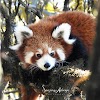The wet land waterbird count was started in January 1967 throughout Europe and in adjacent regions. Now in its 53rd year, the International Waterbird Census has become a significant source of knowledge for the conservation and management of wetlands and waterbirds round the world. The waterbird survey is coordinated by the Wetlands International world widely. The water bird count is an annual event that's conducted across the world in January 4th to 19th. The waterbird count survey is vital to estimate the population size of individual birds family, migration trends of birds and to spot important wintering sites. The counting survey helds hence, it's one among the world’s most vital and valuable monitoring programmes for waterbirds conservation. the primary waterbird count in Nepal was held in 1987 and for 2020 it'll be running on its 33rd for this year! we've conducted the counting for Eastern a part of Nepal, within the area of Koshi Tappu and its adjacent wetland areas. The counting results of has been published .
Birding Team - 2020
The event was organized around the Koshi area from 10th-14th January, 2020. This event was supported by more than 30 volunteers from Koshi Bird Society, Koshi Tappu Wildlife Reserve, Himalayan Nature, Nepalese Ornithological Union, Koshi Tappu Birdwatching Camp, Pokhara Bird Society, Koshi Camp and Koshi Bird Observatory.
This edition of mid-winter water bird count was conducted in Mangalbare and Betana wetland area of Morang, Koshi Tappu Wildlife Reserve, Chatara, Tarahara and Barjutaal of Sunsari, Koshi Barrage, Bharhdaha wetland area and Kamalpur Lake of Saptari, and Bhagalpur wetland area of Udaypur. This year’s count recorded low number of birds but high number of bird species compared to last year record.
Number Of Waterbird Count in East Nepal
This year’s count recorded a total of 21,774 water birds representing 58 species. More than half of the total number was recorded from Barju Lake alone.A total of 6,959 water birds representing 52 species were recorded from KWTR among which Ruddy Shelduck was the most abundant, numbering 2,321 individuals. Similarly, a total of 2,330 water birds were recorded from areas around KWTR and Koshi Barrage. Ruddy Shelduck was recorded more frequently (474 individuals) than others.During the count, 14 and 15 nests of Lesser Adjutant were recorded from Sunsari’s Tarhara and Morang’s Mangalbare respectively.Barjutal of Sunsari is considered an important habitat for duck species. 12,248 birds representing 30 species were recorded from this area among which the most recorded was the Common Till (5722) followed by the Lesser Whistling Duck (3722).
Ibisbill after 10 years
Ibisbill in Nepal
Ibisbill breeds Mountains and an altitude migrant in the winter season. A pair were sighted at the lower stream of Koshi River. Two were sighted in February 2009.







0 Comments